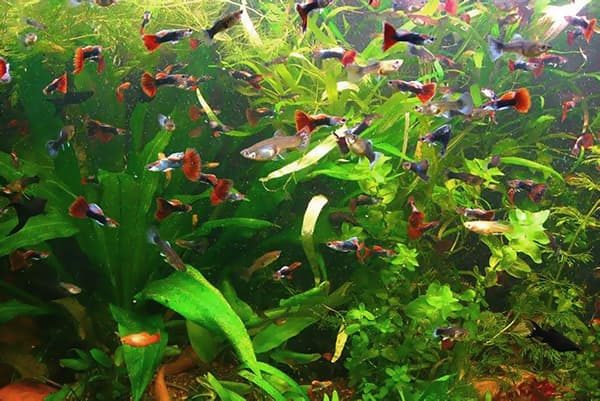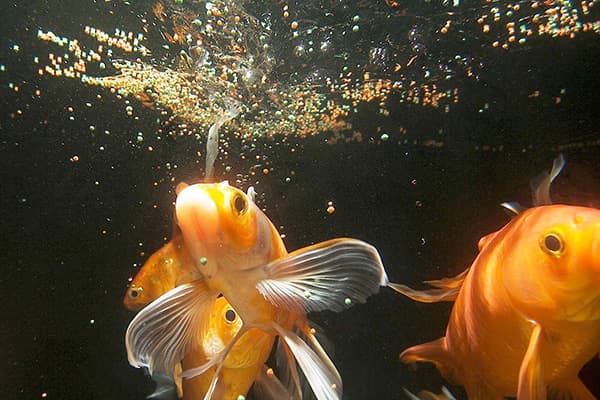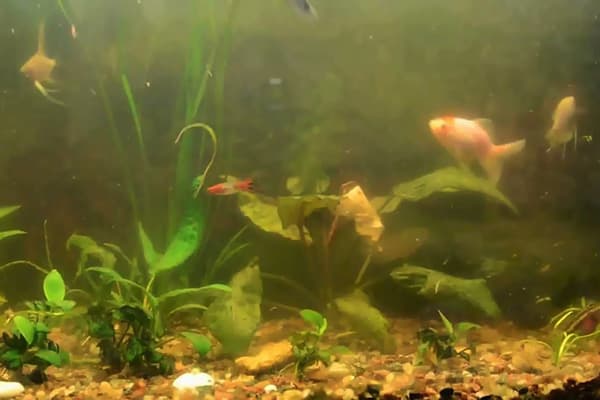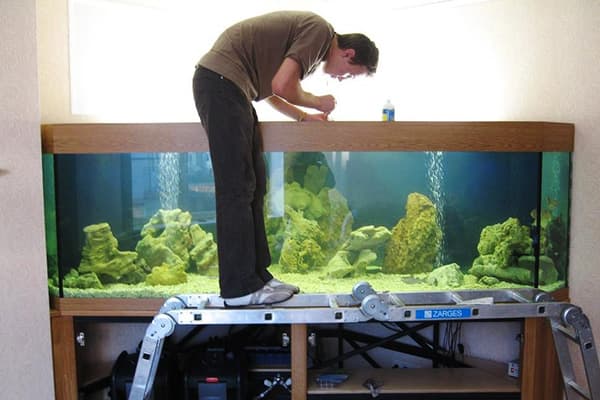Why does the aquarium have an unpleasant odor and how to solve this problem?
Transparent water, absence of foreign odors, clean walls - the dream of any aquarist. Millions of microorganisms live in the aquarium, so the characteristic smell from the aquarium is always present. If the smell has become unpleasant, this is a signal that the ecosystem is disturbed and urgent measures are needed to restore it.

Reasons for changes in the smell of water
There is a way to quickly solve the problem. But if the cause is not found, the nasty smell will return again.
- Large number of inhabitants
One of the common causes of aquarium stench is overcrowding. Each fish requires a certain volume to live. If there is not enough of it, the amount of oxygen in the water decreases, and waste from the inhabitants clogs the soil and water. Follow the recommendations and keep track of how many fish and what size can live in your aquarium.
For a small fish you need 3 liters of water. Also pay attention to the number of plants, snails and other inhabitants.
- Soil layer thickness
It is difficult for a novice hobbyist to understand how much soil is needed for his aquarium and what size stones to choose. Residues of food and fish waste accumulate in a thick layer of soil. If the layer is too thick, organic matter begins to rot and methane begins to be released. All this is reflected in the smell of water, putrefactive notes appear.
Choose stones of different diameters for the soil; the layer thickness should not exceed a height of 5 cm.
- Overfeeding
A common cause of a disgusting odor is excess feed. The fish should not be overfed: uneaten food sinks to the bottom and rots. Microorganisms multiply and upset the balance. The consequences of overfeeding are manifested in a sharp, rotten stench.
You need to do the following:
- reduce portions;
- remove leftover food;
- wash the soil;
- Do not feed the fish for 1-2 days, this will not bring them trouble.
Change the food - you may have purchased a poor quality one. If after this the aquarium smells of fresh water and greenery, you have found the source of the problem.
- Poor aeration
When there is insufficient oxygen supply in the water, anaerobic bacteria begin to multiply, causing it to become cloudy and produce an unpleasant swampy odor. Check if your filter and compressor are suitable, if they are working well, and if there is enough oxygen supply. If the fish behave unnaturally and stay in the lower part of the aquarium, it means they do not have enough oxygen. Install a compressor of higher power, change the filter, choosing a sample with a forced circulation system, adjust the oxygen supply.
- Late cleaning
In order for a pleasant aroma to come from an aquarium with fish, it is necessary to maintain cleanliness and prevent the color of the water and glass from changing.
The frequency of cleaning depends on the size of the container. In addition, living in an aquarium with snails and some breeds of fish, which act as “orderlies,” allows you to reduce the frequency of cleaning. If you find dead inhabitants during cleaning, change all the water to avoid contamination.
- Stagnation of water
In large-volume aquariums, a natural balance is established - it is enough to add fresh water instead of evaporated water. But in most cases this is not enough, because fish excrement and food residues accumulate. Changing 25–30% of the water every week is considered optimal.
It is important to observe moderation. A weekly complete water change leads to the death of beneficial microorganisms and fish.
- Incorrectly selected decorative elements
Shells, driftwood and locks made from low-quality plastic over time begin to release toxic substances that affect the condition of the water. Buy decorative elements from specialized pet stores, pay attention to the material from which they are made.
Removing unpleasant odor
Whatever the cause of the problem, the most effective method of getting rid of it is to clean the aquarium and change the water.
To make the procedure take less time, prepare everything you need in advance:
- container for transplanting fish;
- prepared, pre-settled water;
- net;
- tools and preparations for cleaning glass;
- pump;
- thermometer.
Sequencing:
- Using a net, transplant the aquatic creatures into a temporary container. Make sure that the temperature in it and the aquarium matches.
- Disconnect the thermometer, filter, compressor. Take them out.
- Take out the decorations and seaweed.
- Let the water settle, use a pump to remove some of the water, and pour into a clean bucket.
- Take out the soil and wash it.
- Pour out any remaining cloudy water and use a scraper to clean the glass and bottom of the aquarium. If necessary, use special products for cleaning aquarium glass.
- Rinse the algae and remove damaged and rotten areas.Wash the decorative elements and disinfect them for half an hour in a solution of water and bleach. Brush the jewelry with an old toothbrush to remove all plaque. Rinse in clean water and pour over boiling water.
- Place soil and decorative parts on the bottom of the aquarium.
- Clean the filter, rinse the thermometer and compressor.
- Pour in old water, add fresh water to the required volume.
- Install the equipment.
- Check the temperature in the aquarium, bring it to the level at which the fish are kept in a temporary container.
- Connect the equipment, transplant the inhabitants of the aquarium.
Biological water filters will help you keep the water in your aquarium clean. These preparations break down the remains of organic substances, destroy putrid and swampy odors, and prevent contamination of the soil, algae, and walls. Thanks to this, the water remains clean and the load on the filter is reduced. The drugs help create natural environmental conditions in a densely populated aquarium. These products are safe and can be used every time you change the water.
So, if the aquarium begins to smell unpleasant, then it’s time to thoroughly clean it and pay attention to the conditions in which the fish are kept. Usually solving this problem is not difficult, you just need to correctly identify the cause of the smell.


